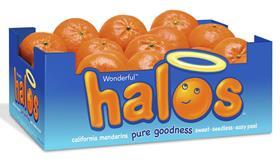
Despite a warm autumn that delayed fruit colouring, the 2016 clementine deal was progressing smoothly, according to industry reports.
“The clementine season got off to a great start,” noted Dan Kass of Wonderful Citrus, which markets Halos-branded mandarins. “Fruit quality and taste have been excellent and we anticipate a good range of sizes for supplying all markets.”
“Clementines have been moving pretty well so far this season,” agreed Barney Evans of Sun Pacific Shippers, which packs the Cuties label. “Things might have been even better if everyone would start when the fruit is sufficiently ripe and colour levels are higher.”
Evans said that clementine production this season is down by approximately 15 per cent over last year’s levels, however.
“That’s not too surprising as 2015 was a big volume year,” he said.
As for the second half of the California mandarin deal, both Murcotts and Tangos appear to be on schedule for getting underway in early 2017.
“Sun Pacific should begin around the middle of January, with exports starting around the end of the month,” said Evans.
“Quality for Murcotts and Tangos is looking good at this point,” said Kass. “If there are no weather issues, we hope to begin exporting by mid-January.”
Because of California’s geographic position, the Pacific Rim receives the preponderance of the state’s mandarin exports each year. Japan, Australia and New Zealand dominate in volume, although some fruit is shipped to China-Hong Kong, as well as to South East Asia.
“We elected to hold off shipping clementines to the Australia-New Zealand markets because the crop was a bit short and transit times are only getting longer,” said Evans.
Because of the presence of Mikan mandarins in the Asian supply lines during the autumn and early winter months, Japan primarily imports only the Murcott and Tango varieties. Australia and New Zealand, on the other hand, are typically in the market from November to March.



